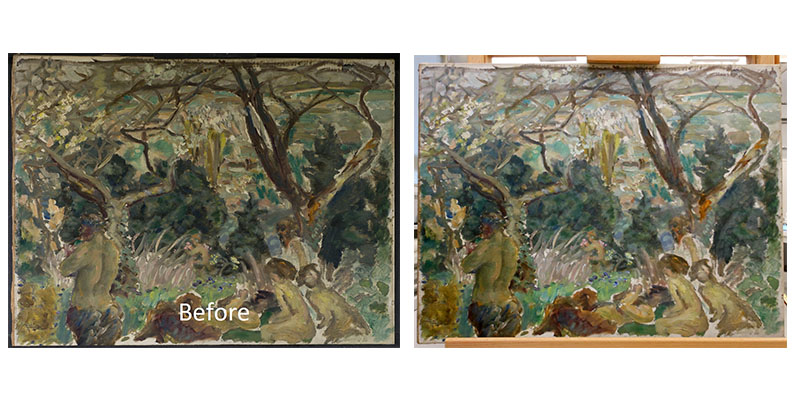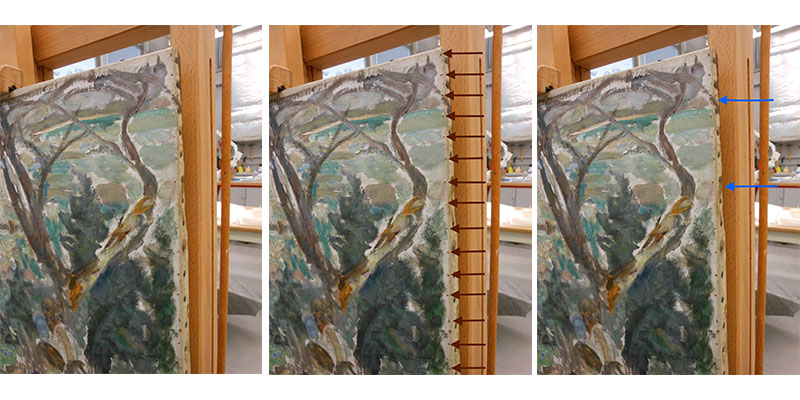- Events & Programs Home
- Calendar
- Accessibility
- Adults
-
Families & Teens
- Families & Teens Home
- 10x10 Teen Art Expo
- Art on the Rise
- Art Together: Art Making for Families with Children Ages 3–5
- Babies Sing with May Festival Minis
- Boy Scouts / Girl Scouts
- CAM Kids Day
- Family Storytime and Gallery Walk
- Family Studio: Art Making for Families with Children Ages 6–12
- Games in the Galleries
- Members-Only Baby Tours
- Public Baby Tours
- REC Reads
- Rosenthal Education Center (REC)
- Saturday Morning Art Class
- See Play Learn Kits
- Summer Camp
- Teen Fest: Zine and Comic Exchange
- RECreate
- Teachers
- Community Outreach
- Fundraisers
- Plan Your Own Event

- Events & Programs Home
- Calendar
- Accessibility
- Adults
-
Families & Teens
- Families & Teens Home
- 10x10 Teen Art Expo
- Art on the Rise
- Art Together: Art Making for Families with Children Ages 3–5
- Babies Sing with May Festival Minis
- Boy Scouts / Girl Scouts
- CAM Kids Day
- Family Storytime and Gallery Walk
- Family Studio: Art Making for Families with Children Ages 6–12
- Games in the Galleries
- Members-Only Baby Tours
- Public Baby Tours
- REC Reads
- Rosenthal Education Center (REC)
- Saturday Morning Art Class
- See Play Learn Kits
- Summer Camp
- Teen Fest: Zine and Comic Exchange
- RECreate
- Teachers
- Community Outreach
- Fundraisers
- Plan Your Own Event
Blog: CAM Uncovered
Blog: CAM Uncovered
- Home
- Plan Your Visit
- Art
-
Events & Programs
- Events & Programs Home
- Calendar
- Accessibility
- Adults
-
Families & Teens
- Families & Teens Home
- 10x10 Teen Art Expo
- Art on the Rise
- Art Together: Art Making for Families with Children Ages 3–5
- Babies Sing with May Festival Minis
- Boy Scouts / Girl Scouts
- CAM Kids Day
- Family Storytime and Gallery Walk
- Family Studio: Art Making for Families with Children Ages 6–12
- Games in the Galleries
- Members-Only Baby Tours
- Public Baby Tours
- REC Reads
- Rosenthal Education Center (REC)
- Saturday Morning Art Class
- See Play Learn Kits
- Summer Camp
- Teen Fest: Zine and Comic Exchange
- RECreate
- Teachers
- Community Outreach
- Fundraisers
- Plan Your Own Event
- Give & Join
- About
- Tickets
- Calendar
- Exhibitions
- Collections
- Blog
- Shop
Behind the Scenes in Conservation: Some forensic findings
by Conservation
4/23/2020
Bonnard , paintings conservation , behind the scenes , oil sketch , technical art history

Pierre Bonnard (French, b.1867 d. 1947,), Fauns in a Landscape, circa 1910-15, oil on canvas, Bequest of Mary E. Johnston, 1967.1318
When this landscape by Pierre Bonnard went out on loan to another museum a few years ago, our paintings conservator only had time to surface-clean it, to remove the dust and grime that was on the surface. At that time, a condition report she wrote for the painting noted that the varnish was discolored and, more importantly, that there appeared to be grime present underneath the varnish. Grime under varnish is a clear indicator that the painting had been left unvarnished long enough to get dirty, so the painting was more than likely left unvarnished by Bonnard.
A more thorough cleaning was undertaken once the painting returned from loan. The discolored, non-original varnish was removed and the colors brightened considerably. In consultation with the curator, our paintings conservator did not revarnish the painting, because that is believed to be more in keeping with the artist’s intent. It will now be displayed behind glass as a protective measure.
Our paintings conservator also noted some unusual characteristics in the oil-on-canvas painting. One is a series of pinholes through the front of the canvas along both sides (brown arrows). Another is the continuation of a few of the brushstrokes over onto the side of the stretcher (blue arrows).

Pierre Bonnard (French, b.1867 d. 1947,), Fauns in a Landscape, circa 1910-15, oil on canvas, Bequest of Mary E. Johnston, 1967.1318
Both these characteristics suggest that Bonnard started painting on the piece of canvas while it was pinned flat, probably to a board. Then at some point he unpinned the canvas and stretched and tacked it to the current stretcher. There are no extra tack holes on the tacked edges, or additional folds in the canvas, proving that the painting is in its original stretch. The canvas has never been removed and re-tacked, in other words. And some of the front pinholes are covered with paint, showing that Bonnard continued to paint after the canvas was stretched.
Evidence of Bonnard’s on-the-fly creation of this work is also supported just by the sketchy nature of the landscape. It looks rather unfinished, with many areas where the white preparatory underlayer is exposed.
While we can’t prove exactly how the artist created the painting, our conservators make note of this kind of forensic evidence, part of what is referred to as “technical art history.” It’s noted in the treatment report that is now part of the conservation file. In the future, it might aid scholarly research into the works of Pierre Bonnard.
Related: Behind the Scenes in Conservation: Nineteenth Century American Landscape
Cincinnati, OH 45202
Toll Free: 1 (877) 472-4226
Museum Hours
Museum Shop
Terrace Café
Library
Cincinnati Art Museum is supported by the tens of thousands of people who give generously to the annual ArtsWave Campaign, the region's primary source for arts funding.

Free general admission to the Cincinnati Art Museum is made possible by a gift from the Rosenthal Family Foundation. Exhibition pricing may vary. Parking at the Cincinnati Art Museum is free.
Generous support for our extended Thursday hours is provided by Art Bridges Foundation’s Access for All program.

General operating support provided by:



